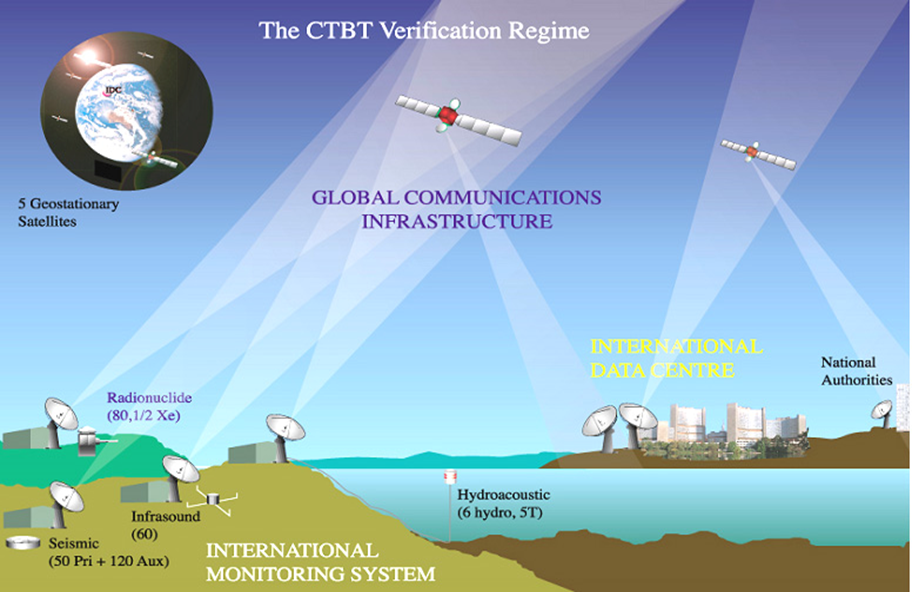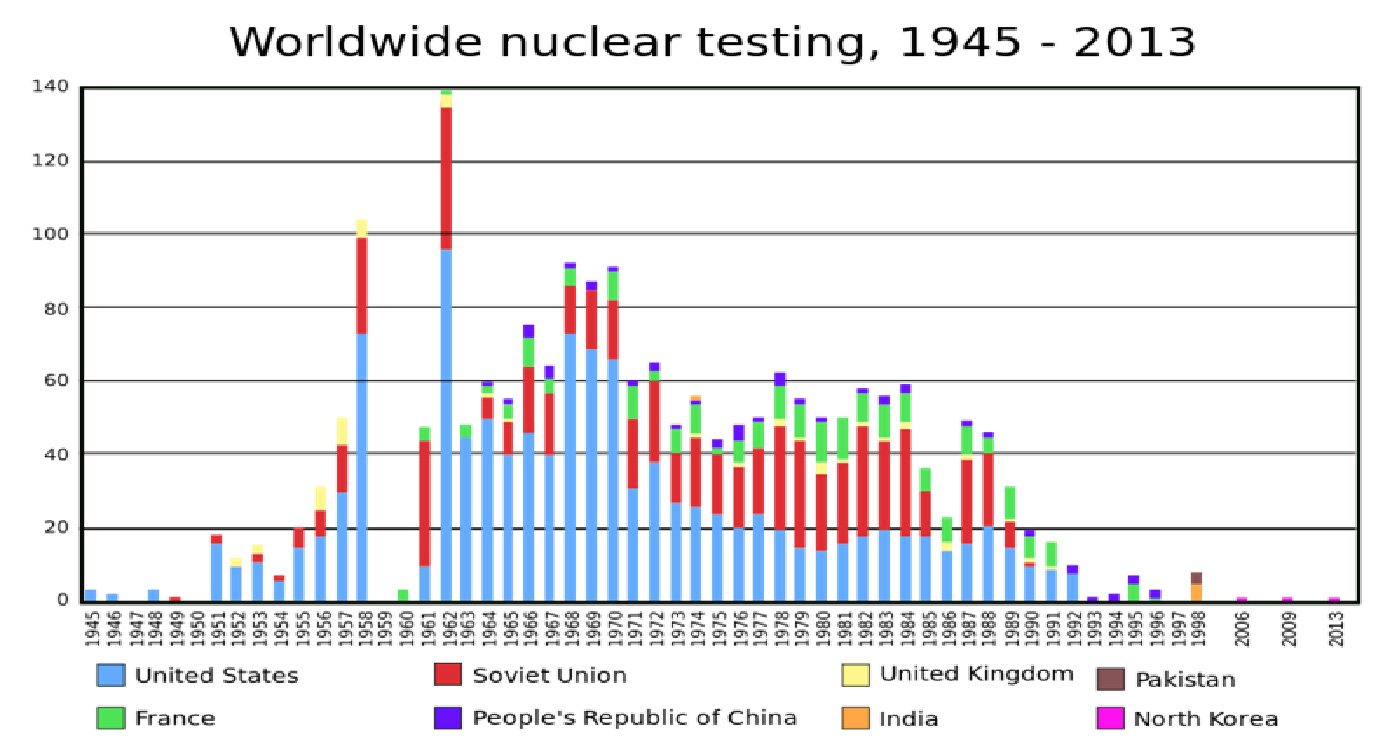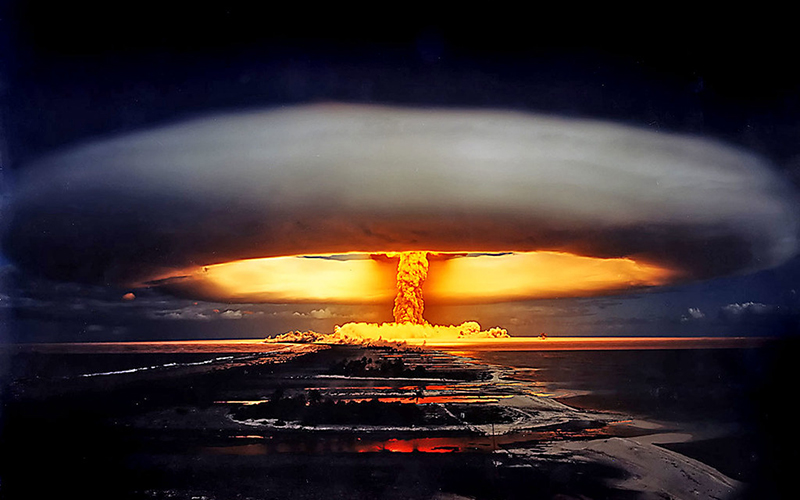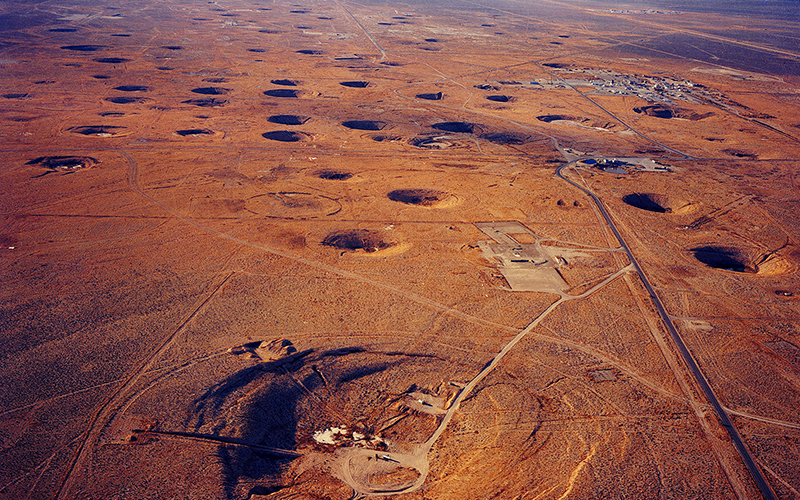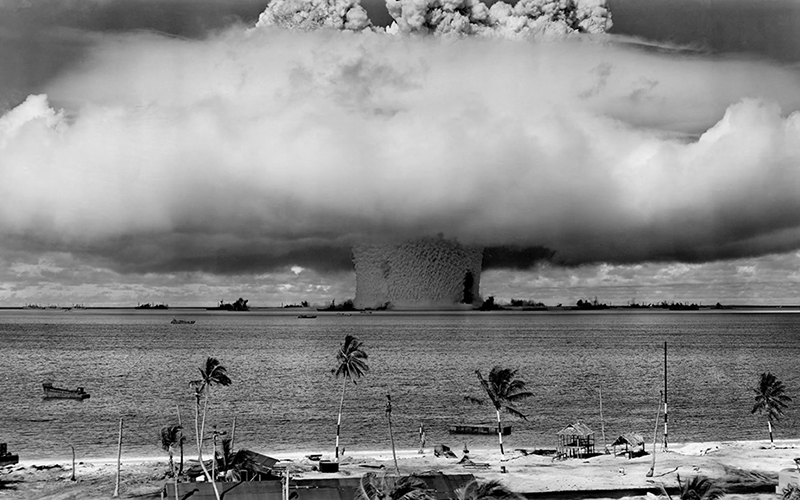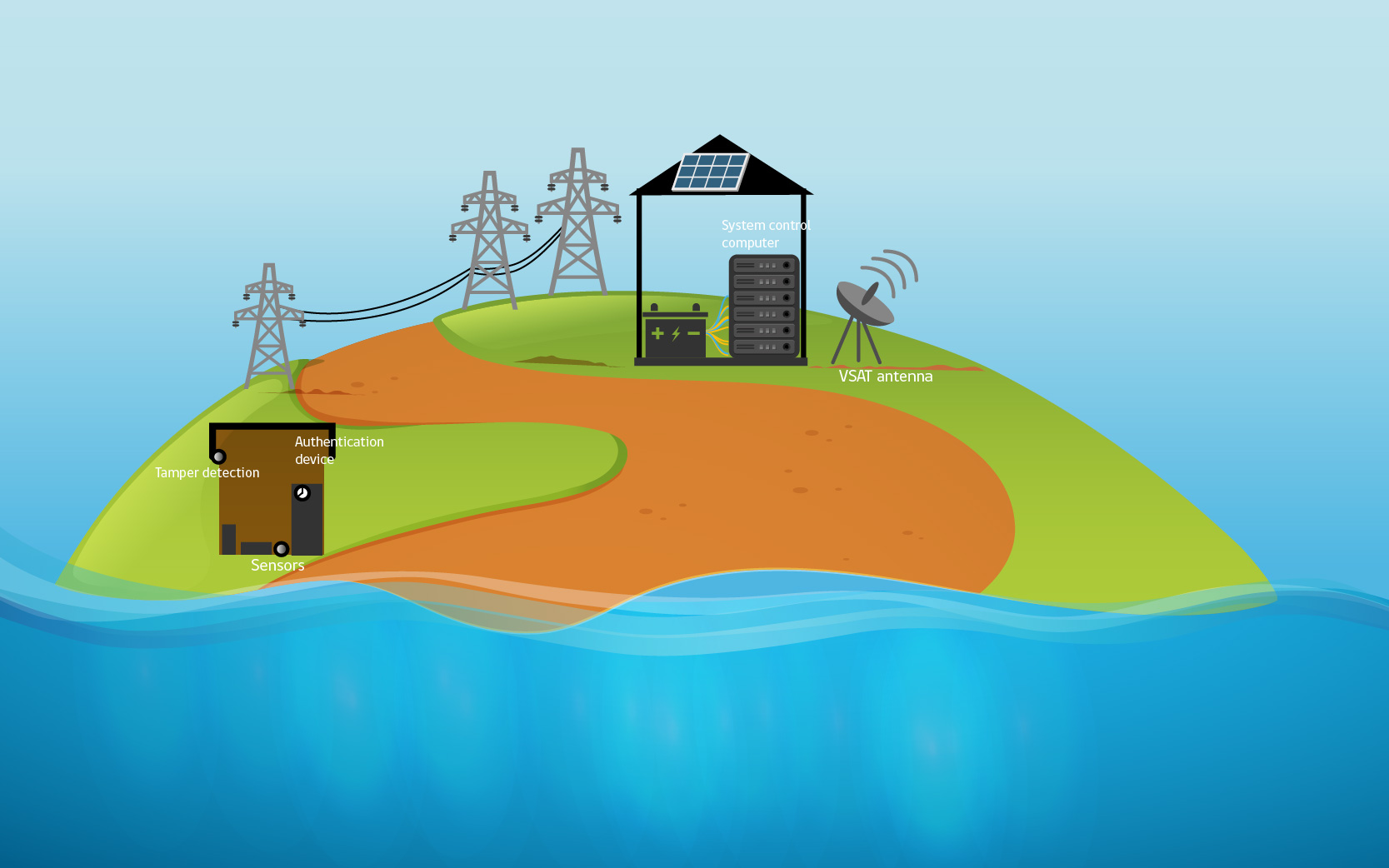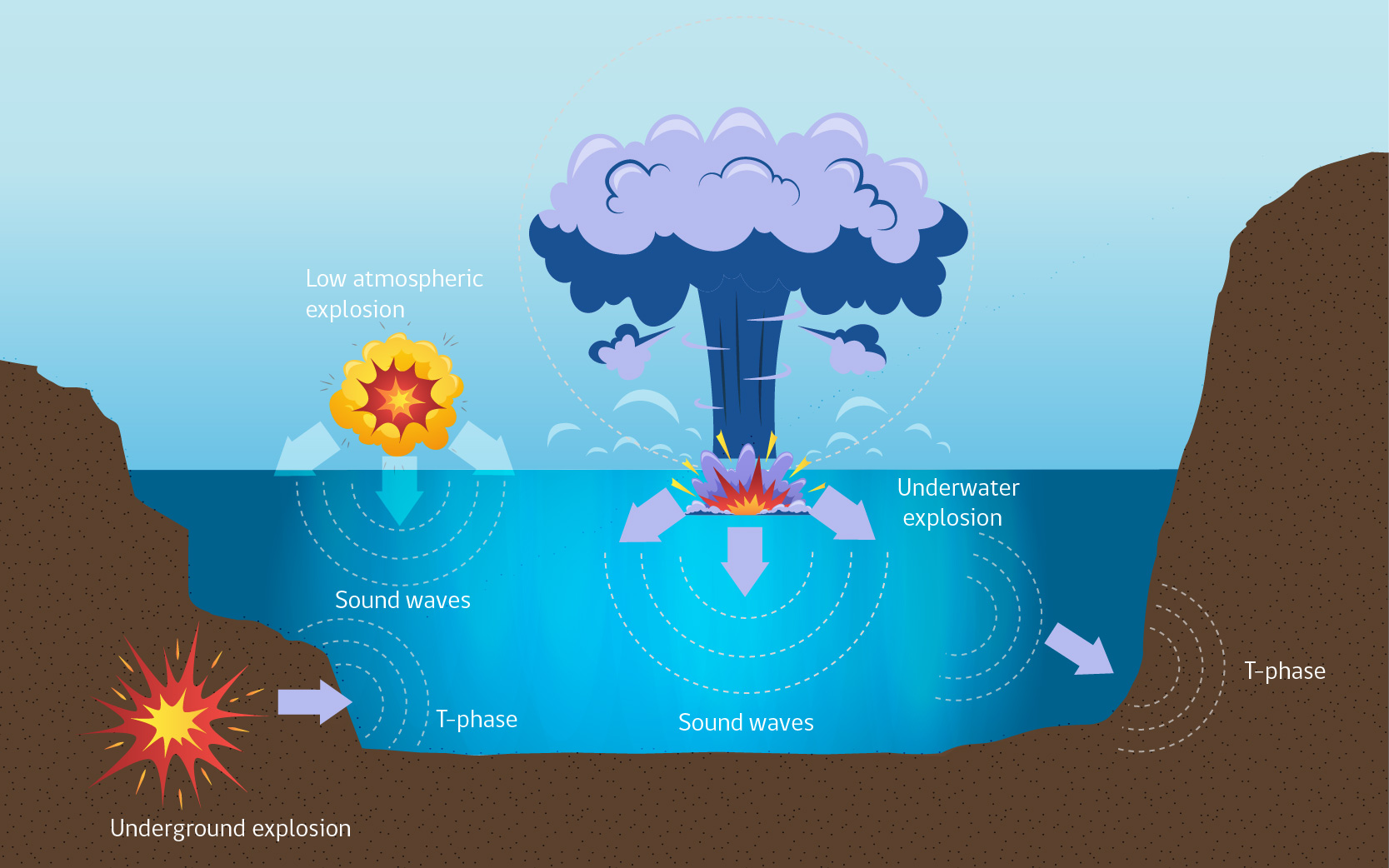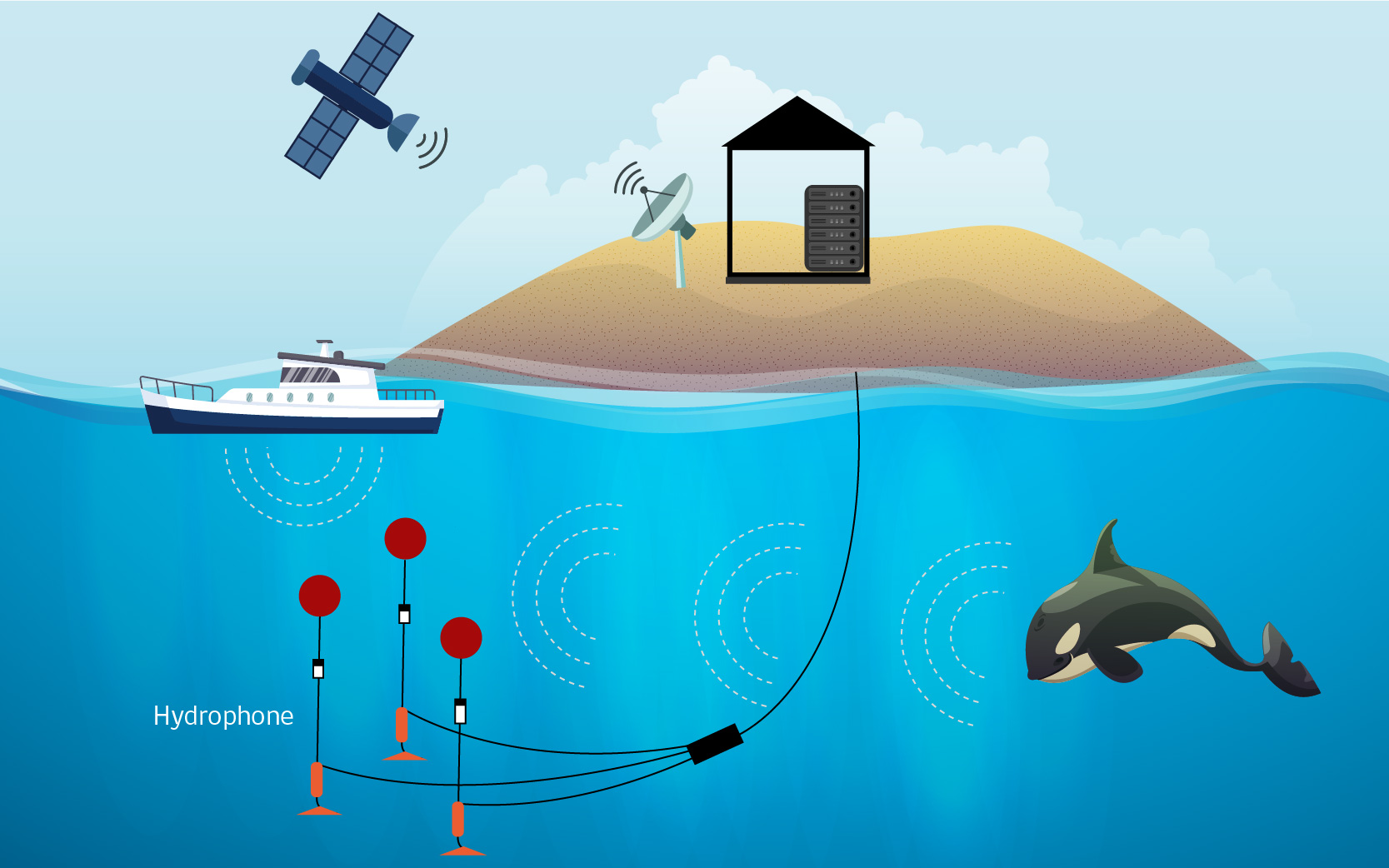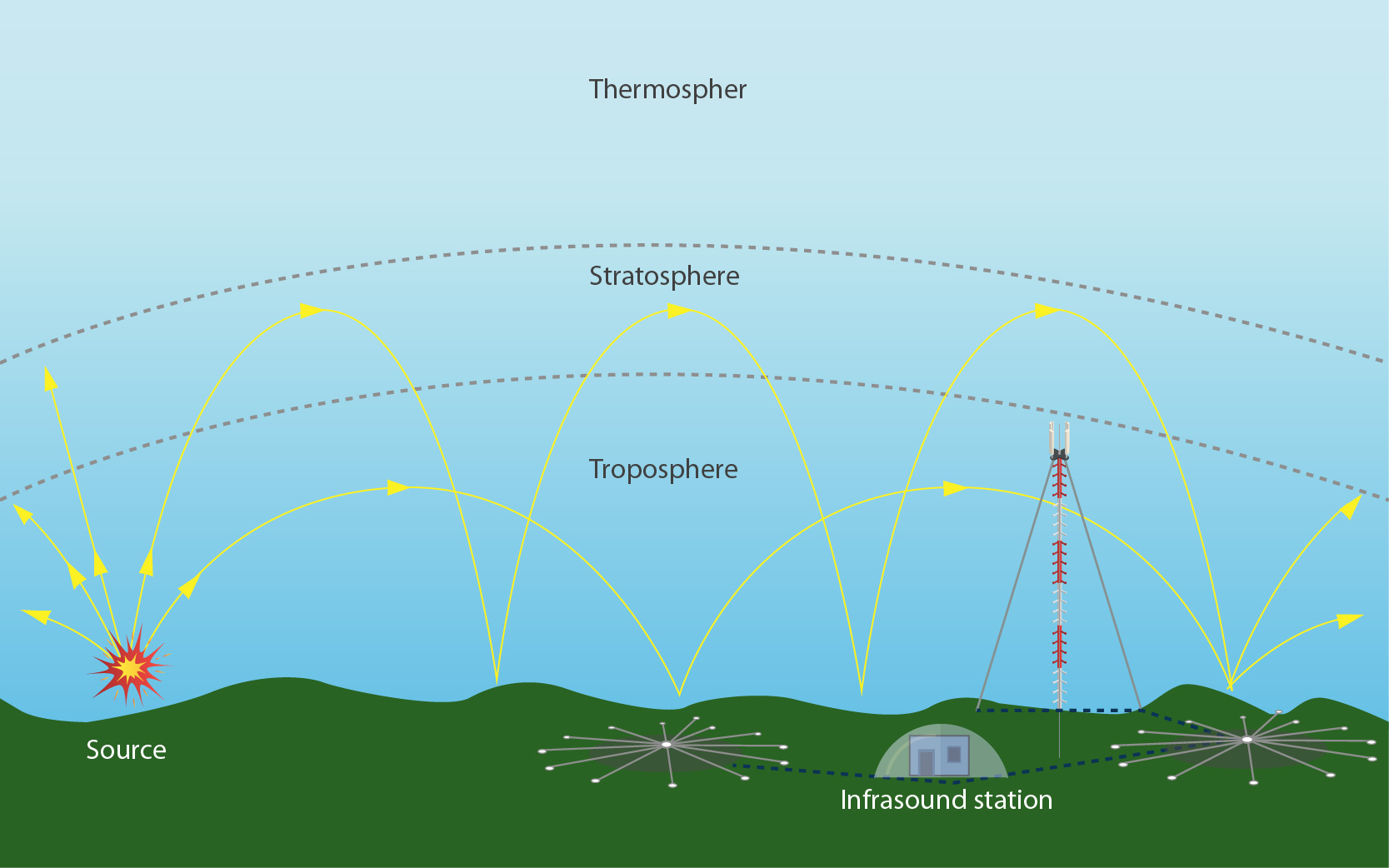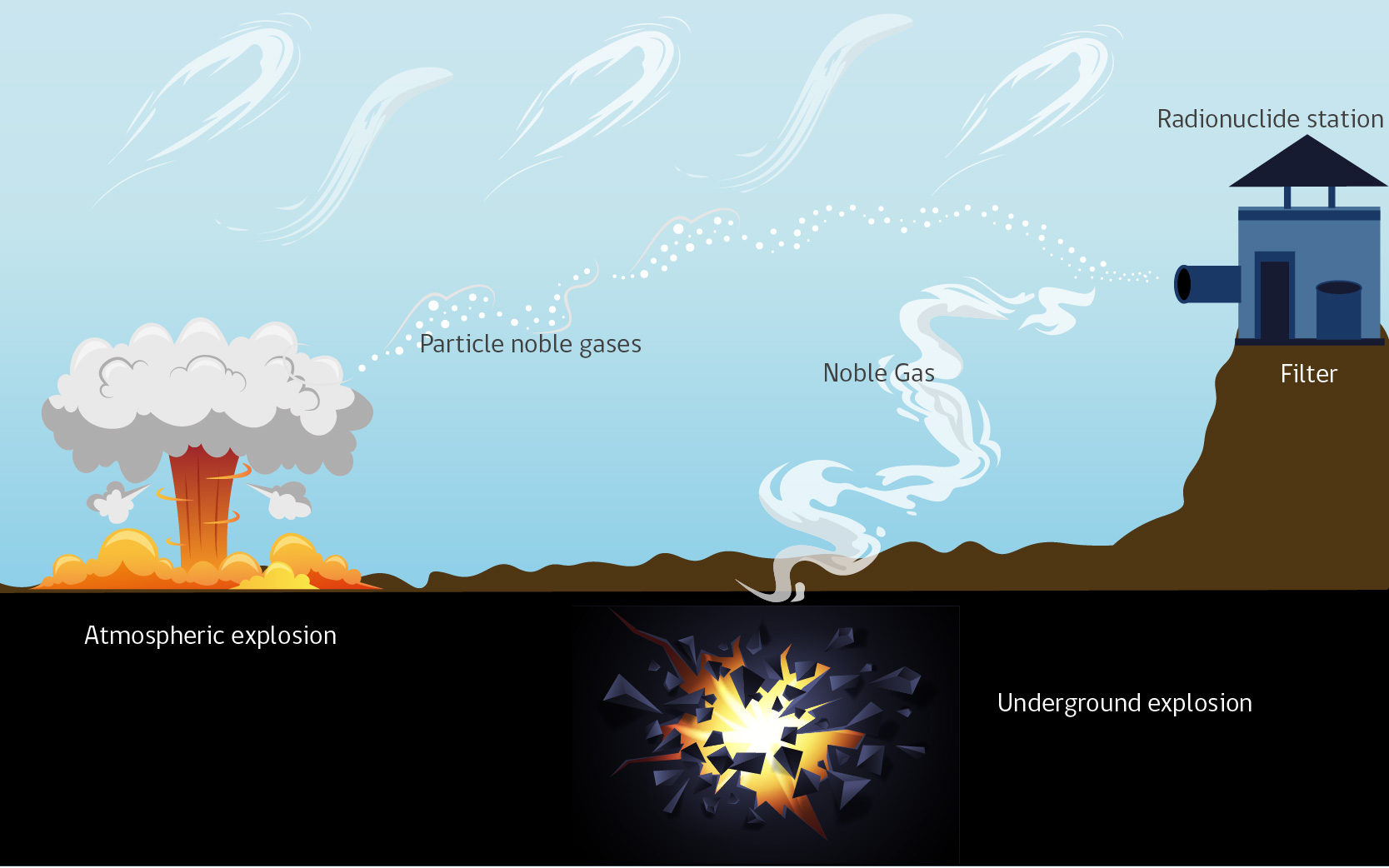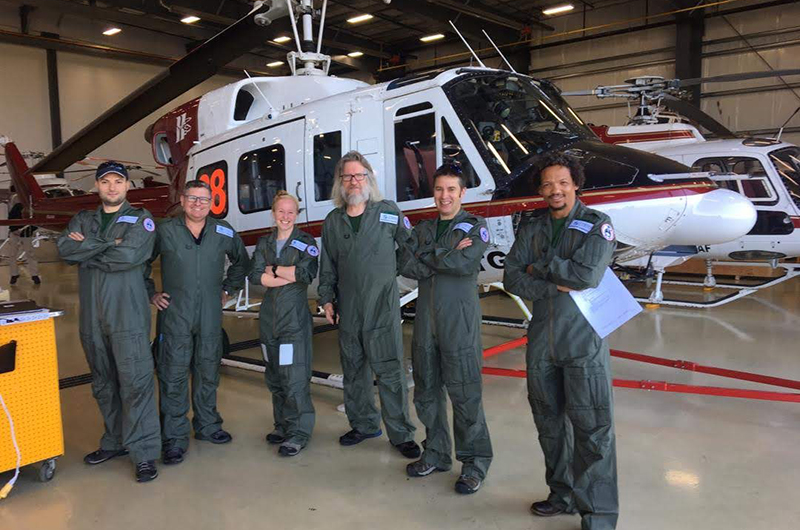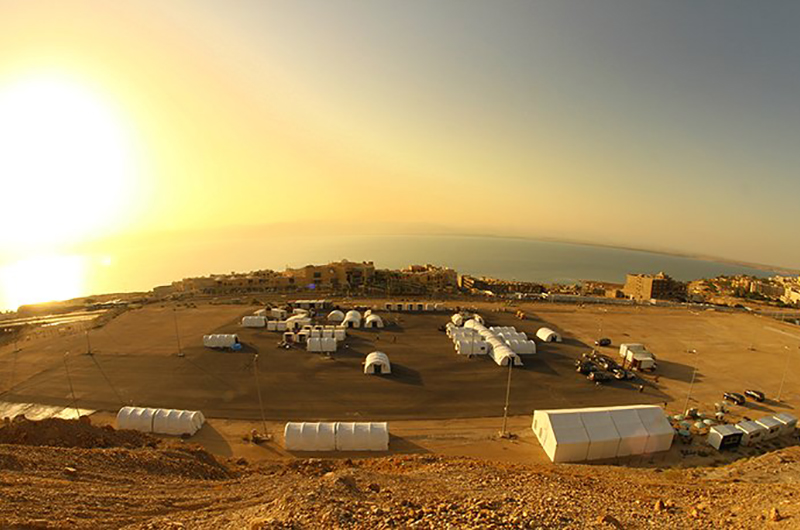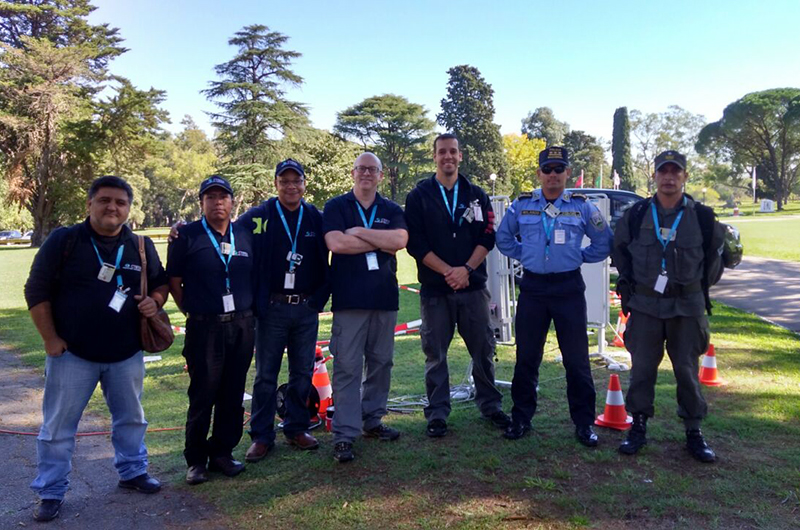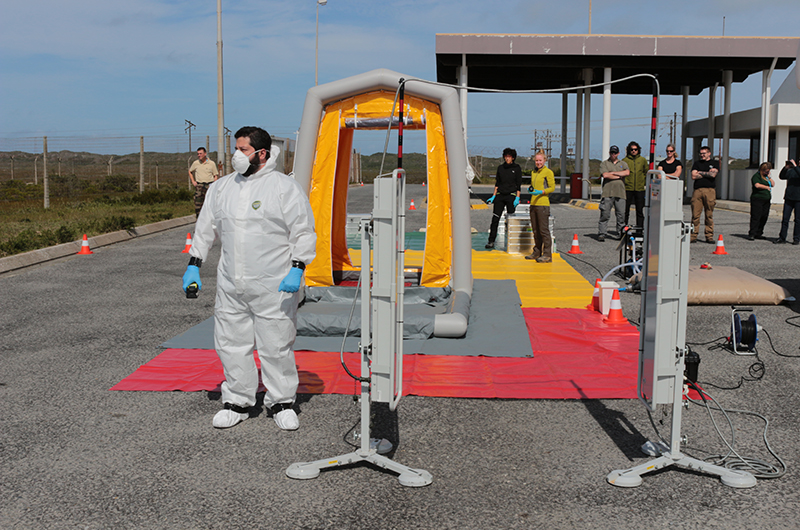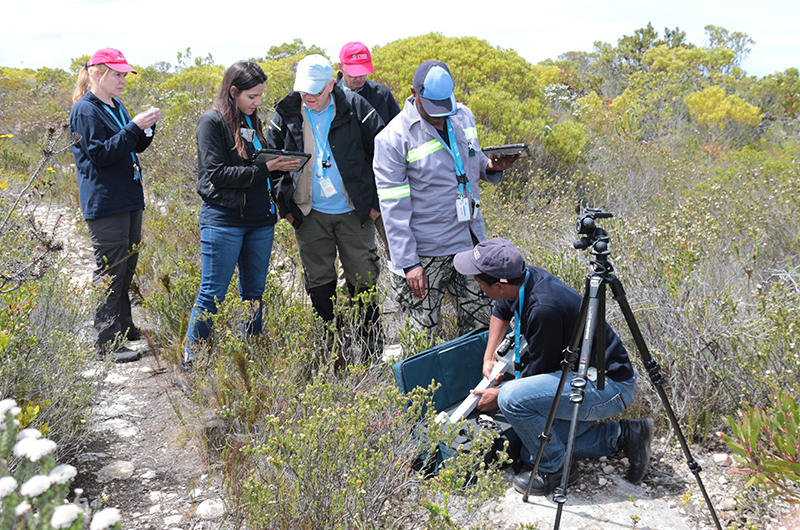Treaty (CTBT)
Between 1945 and 1996 more than 2000 nuclear tests were conducted in the world, threatening peace and the environment, whence a treaty to seek ban nuclear tests on Earth was formulated, the Comprehensive nuclear Test Ban Treaty (CTBT). The Comprehensive Nuclear-Test-Ban Treaty was adopted by the General Assembly on 10 September 1996 (resolution 50/245) and was opened for signature by all States on 24 September 1996. It will enter into force 180 days after the date of deposit of the instruments of ratification by all States listed in Annex 2 to the Treaty. The names of the countries are those that were in use when the Treaty was adopted. The Text on the Establishment of a Preparatory Commission for the Comprehensive Nuclear-Test-Ban Treaty Organization was adopted on 19 November 1996 (resolution CTBT/MSS/RES/1) at a Meeting of States Signatories convened by the SecretaryGeneral of the United Nations in his capacity as Depositary of the Treaty. Chile signed the Treaty on 24 September 1996 and ratified it at the United Nations on 12 July 2000. Since then, the obligations of these contracts, entrusted to the Chilean Nuclear Energy Commission as the National Authority, have been fulfilled.
How a nuclear testing can be verified?
The way nuclear testing can be verified is through the Verification Regime of the Comprehensive Nuclear-Test-Ban Treaty (CTBT) wich was designed to detect any nuclear explosion conducted on Earth – underground, underwater or in the atmosphere. The purpose of the verification regime is to monitor countries’ compliance with the CTBT which bans all nuclear explosions on the planet. Besides promoting the CTBT, the main task of the Preparatory Commission for the Comprehensive Nuclear-Test-Ban Treaty Organization (CTBTO) is to build this regime and to ensure that it is operational by the time the Treaty enters into force.
The verification regime consists of the following elements:
The International Monitoring System (IMS) consists of 321 monitoring stations and 16 laboratories built worldwide. These 337 facilities monitor the planet for any sign of a nuclear explosion.
Four verification technologies
The IMS uses four complementary verification methods, using the most modern technology available. Seismic, hydroacoustic and infrasound stations monitor the underground, the large oceans and the atmosphere respectively.
Radionuclide stations detect radioactive debris from atmospheric explosions or vented by underground or underwater nuclear explosions. Radionuclide laboratories assist radionuclide stations in identifying these radioactive substances.
Detection Technologies Seismic: based in seismology, which is the study of seismic waves, their propagation through the Earth, their sources and their effects. The seismic waves result from natural energy release, as earthquakes and volcanic eruptions, but also from man-made events. A seismic event generates body waves and surface waves. Both are important for the analysis of a suspicious incident. Besides, they provide essential information on the location, the strength and the nature of an event. Thanks to these stations we can help determine if a nuclear test was carried out. It uses seismic sensors or seismometers to calculate intensity of waves produced by seismic activity. The objective of seismic monitoring is to detect and locate underground nuclear explosions. Hydroacoustic:this technology uses sensors to detect sound waves travelling through the water; the signals are capable of showing changes in water pressure produced by sound waves. Sound propagates very efficiently throughout the water so it can be heard and detected at great distances. Additionally, the collected data can help us to determine where a nuclear explosion has been carried out; underwater, near the coastline or in the surface of the ocean. Hydroacoustic monitoring can be used to discriminate signals generated by nuclear explosions from signals caused by human activity or natural events. Those activities or events may include natural occurrences like volcanic eruptions or underwater earthquakes. There are two sensing techniques for hydroacoustic technologies; underwater hydrophones and small seismometers on small, steep-sloped islands. In our country, there is a hydrophone station in Robinson Crusoe Island. The hydrophone sensors of these stations are underwater microphones converting the changes in the water pressure caused by sound waves into electric signals which can then be measured. The actual measuring equipment consists of two sets of three hydrophones on opposite sides of the island. Infrasound: the sensors from these stations measure micropressure changes in the atmosphere which are generated by the propagation of infrasonic waves, these waves have low frequency (<20 Hz), so are not audible for human ears. It is capable of detecting atmospheric detonations through the wind; the sound can be extended to long distances, with little dissipation. It can be produced by volcanoes, meteors, storms, mining and rocket launches. Through microbarometers it is possible to detect the changes in the atmospheric pressure produced by infrasound waves. These stations use array configurations; each array contains four or more array elements arranged in different geometric patterns, a meteorological station, a central processing facility and a communication system for the transmission of data. Radionuclide: Provides confirmatory evidence of the nuclear nature of a suspicious event. There are different kinds of devices that can be used with this type of technology. This technology is one of the best ways to know if a nuclear explosion has been carried out because it can detect noble gases, radioactive particles and debris in the atmosphere. These stations have not less than 90% probability of detecting any above-ground nuclear weapon test within 14 days and detection of vented noble gases from underground or underwater tests. The nuclear explosions suck up surrounding air and ground and become a radioactive cloud that can be carried out great distances by wind and can be washed out by rain. Particles slowly precipitate within a rate that depends of its size and radioactive noble gas stay in the atmosphere. The stations can measure particles and/or noble gases, Rapa Nui station can measure both and Punta Arenas station measures particles.
The IMS is supported by an International Data Centre (IDC), located at the headquarters of the CTBTO in Vienna, Austria. The IDC processes and analyses the data registered at the monitoring stations, and produces data bulletins that are submitted to the Member States for their evaluation and judgement. The IDC assists Member States in assuming their verification responsibilities by providing capacity building services necessary for effective global monitoring.
Nuclear test environments
According to the site of detonation, nuclear test can be categorized in three environments: Atmospheric test: Earth’s surface (ground or water) Underground test: Under the surface of the ground Underwater: Under the surface of water
Every nuclear test results in shockwaves that can be measured in three different waveform technologies: Infrasound, Seismic and Hydro-acoustic. However, there is a fourth technology that can help us identify a nuclear test: Radionuclide and it is determinant in order to classify an event originated from a nuclear explosion or a natural event, as earthquakes.
Processing of data
The detected data are used to record, locate and analyze events with emphasis on monitoring nuclear explosions. Data are immediately processed through an initial automatic analysis, the so-called data bulletin, which is published within two hours. Secure signature accounts have been established to allow Member States access to these data and products. Extensive support is given to the users designated by the Member States by providing a standard software package, training courses and technical assistance.
The Global Communications Infrastructure (GCI) transmits the data recorded at the IMS stations to the International Data Centre (IDC). It also transmits raw data and data bulletins from the IDC to the Member States. The GCI ensures global coverage. Data are received and distributed through a network of six satellites. The satellites route the transmissions to three hubs on the ground, and the data are then sent to the IDC by terrestrial links.
If a Member State feels that certain data collected imply a nuclear explosion, a consultation and clarification process can be undertaken to resolve and clarify the matter. This process, which will be available to Member States after the Treaty’s entry into force, allows a State to request clarification directly from another State or through the Executive Council. Member States can also request information from the Director-General of the CTBTO. A State that received such a request has 48 hours to clarify the event in question.
An On-Site Inspection (OSI) is a meticulous search of a clearly defined inspection area to gather evidence as to whether or not a nuclear explosion has occurred. An On-Site Inspection is the final verification measure under the Comprehensive Nuclear-Test-Ban Treaty (CTBT) and follows up on suspicious but inconclusive evidence of a nuclear explosion obtained by the global network of CTBT monitoring stations. Once the CTBT has entered into force, a State Party may request an On-Site Inspection if it suspects that another State has conducted a nuclear explosion. The inspection is authorized to proceed if it has been approved by at least 30 of the States that make up the 51 member States of the organization's executive body, the Executive Council. Rapid deployment on the Field Fourteen trucks were used to transport equipment and material to the site of one of the exercises in preparation for IFE14 (International Field Exercise 2014). Since there is only a narrow window of time during which some of the conclusive evidence of a nuclear explosion can be obtained, an On-Site Inspection should begin as soon as possible, once it has been approved. In fact, the Treaty specifies that the CTBTO has only six days from receipt of the inspection request to transport the inspection team and about 100 tons of equipment to the country subject to inspection. After this, the inspection team has to submit a first progress report within 25 days of the approval of the inspection by the Executive Council. The inspection is expected to last 60 days, unless the Executive Council decides to discontinue the inspection earlier or approves requests by the inspection team to extend the inspection for up to an additional 70 days, with a maximum duration of 130 days. At the heart of an inspection is a team of 40 inspectors, including experts in seismology, geophysics, radionuclides, radiation protection, communications, logistics and information technology.
On a voluntary basis, Member States are to notify the CTBTO Technical Secretariat in case of any chemical explosion using 300 tonnes or more of TNT-equivalent blasting material detonated on their territories. These notifications serve two purposes. First of all, they contribute to the resolution of any eventual misinterpretation of verification data so that for example a large mining explosion is not initially thought to be a nuclear explosion. Secondly, they assist in the testing and fine-tuning of the IMS network.

